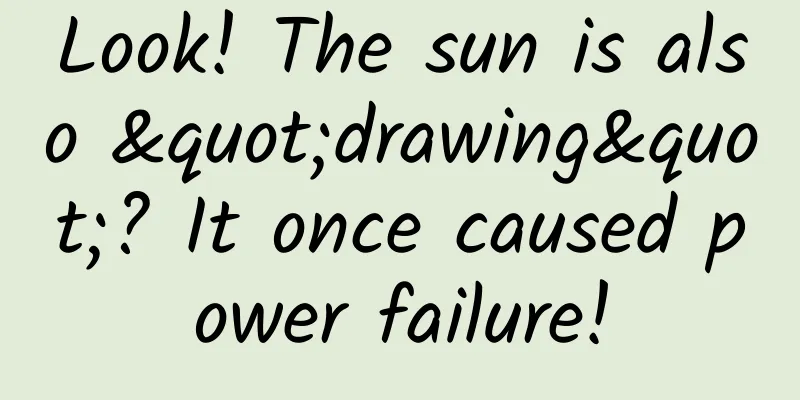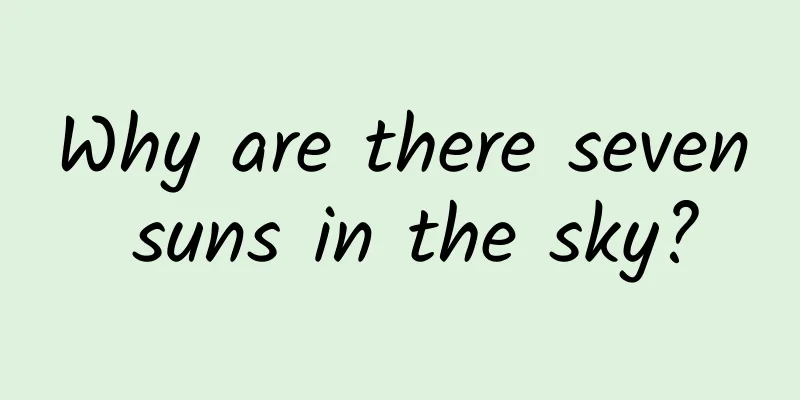Look! The sun is also "drawing"? It once caused power failure!

|
Recently, Nature announced the best scientific photos of 2023. Among them, the work that won the "Our Sun" category award in the 2023 Astronomy Photographer of the Year selection - a photo showing huge "snake-like solar filaments" is particularly eye-catching. People often see "silky" corners of their mouths on the Internet. Does the sun also have "silky"? What exactly are "solar filaments"? Snake-like sun filaments. Photo by Eduardo Schaberger Poupeau 01What exactly is solar silk? We rarely hear the term "solar silk", so what exactly is it? Is it a newly discovered new thing? It is not a new thing. Solar filaments are actually solar prominences . But in foreign countries, solar prominences have another uncommon name, "filament", which means "filament, filament, filament". Therefore, when foreign countries report on solar prominences, if they use "Solar filament" instead of "Solar prominence", "filament" refers to filament. If we translate "Solar filament" literally, it would be "solar filament" or "solar filament"! Solar prominence. Image from NASA. The above is just an explanation of the different names of the same thing. In essence, although solar filaments are solar prominences and solar prominences are solar filaments, there is a difference between when to call them solar prominences and when to call them solar filaments. Solar prominences are large plasma and magnetic field structures extending outward from the surface of the sun. They are usually ring-shaped and can extend outward to the corona . The corona is the outermost layer of the sun's atmosphere, and the interior of the corona is divided into the chromosphere and photosphere. While the corona is made up of extremely hot plasma, prominences contain much cooler plasma, so if you photograph prominences against the solar surface, you'll usually see them as dark filaments . Solar prominence, image from: Visual China But if the prominence is viewed from the side against the dark background of space instead of the bright solar disk, it will be much brighter. Solar prominence observed using an extreme ultraviolet telescope. Image from: Mauna Loa Solar Observatory The lower box in the above picture is a close-up of the solar prominence. This solar prominence is actually a whole. The difference is that the left part is against the background of the sun's surface, so it appears black, while the right part of the solar prominence is against the background of the dark space, so it is extremely bright. At this point, the names began to diverge. If the solar prominence is set against the sun’s surface, it is usually called a “Solar filament”. If it is set against the dark space, it is called a “Solar prominence”, which literally means “solar prominence”. The Chinese translation of “prominence” is “sun prominence”. In ancient China, the word “prominence” meant pearl and jade earrings, as well as the halos on the sides of the sun and moon, which is very appropriate. Image from: National Center for Atmospheric Research In the above picture, the places pointed by the arrows on the left and right are generally called solar prominences in China because their structures are the same. However, in some academic circles, they are called differently due to different backgrounds. So you see, the solar filaments are actually prominences. At this point, many readers may have questions, that is, the snake-like sun filament picture at the beginning of this article is not a dark line, but a bright line. Why is this? The possible reason is that the author took some technical means when shooting, and did some image processing in the post-processing of the picture to highlight it. 02 The " Grumpy Guy " in the Solar Prominence : Explosive Solar Prominence Solar prominences usually have little impact on humans, but "eruptive prominences" among them are not the case, because they may trigger "coronal mass ejections." According to statistics, about 70% of all eruptive prominences are related to coronal mass ejections. "Coronal mass ejection" photographed using a white-light coronagraph, image from: Wikipedia, European Space Agency The process of huge plasma gas carrying magnetic field lines being quickly ejected from the sun is called "coronal mass ejection" . The plasma is ejected at very high speeds, ranging from tens of kilometers per second to over 1,000 kilometers per second. Such a fast and huge amount of plasma ejection will inevitably have an impact on the Earth's magnetic field in a few extreme cases, and then affect human life. The largest impact ever recorded is called the Carrington Event and occurred on September 1-2, 1859. Just a day or two before the Carrington Event, on August 28, 1859, people discovered many sunspots on the sun, and the night sky was different from usual. The night sky was brighter and more colorful than usual. Newspapers at the time followed the hot spots and reported these anomalies. On August 29, people could even see the southern lights from Queensland, the northernmost state of Australia. The large number of auroras on the earth is one of the characteristics of the impact of coronal mass ejections on the earth. Aurora, picture from: Visual China Before noon on September 1, 1859, British amateur astronomers Richard Carrington and Richard Hodgson separately observed flares on the sun. It should be noted that flares are usually accompanied by coronal mass ejections. The following day, plasma from the CME hit the Earth's magnetic field, triggering the strongest solar storm ever recorded, which caused strong auroras and damaged the U.S. telegraph system at the time, paralyzing it in some areas and causing fires. If this storm occurred now, it would likely cause widespread power outages. In addition to the "Carrington Event", there are the following records of coronal mass ejections. On March 9, 1989, a coronal mass ejection occurred from the Sun and struck Earth four days later, on March 13, causing power outages and shortwave radio interference in the Canadian province of Quebec. On August 1, 2010, a coronal mass ejection caused dramatic auroras on Earth three days later. On July 23, 2012, a super solar storm occurred, which is a superposition of coronal mass ejections and flares. This solar storm was huge in scale and had the same intensity as the Carrington Event. Fortunately, this solar storm was not directly facing the Earth, so the impact was not significant. In summary, solar filaments are essentially prominences, and ordinary prominences are just common phenomena on the sun. Only eruptive prominences can have an impact on the earth. But there is no need to worry too much, because even if an eruptive prominence produces a coronal mass ejection, its impact is limited if it is not directly in the direction of the earth. Finally, even if the direction of the ejection is directly towards the earth, there is no need to worry too much, because coronal mass ejections also come in different sizes, and small-scale ones will only produce phenomena such as auroras. References: ①https://solar.physics.montana.edu/ypop/Program/hfilament.html ②https://www.nasa.gov/image-article/what-solar-prominence/ ③https://en.wikipedia.org/wiki/Solar_prominence ④https://en.wikipedia.org/wiki/Coronal_mass_ejection Author: Hanmu Diaomeng, a popular science writer and winner of the "National Excellent Popular Science Work Award" from the Ministry of Science and Technology Reviewer: Zheng Yongchun, researcher at the National Astronomical Observatory of the Chinese Academy of Sciences Produced by: Science Popularization China Produced by: China Science and Technology Press Co., Ltd., China Science and Technology Publishing House (Beijing) Digital Media Co., Ltd. |
>>: Family! Microwave ovens can really cook, and they are healthier than boiling water
Recommend
Marketing's key: consumer attention
Nowadays, it is difficult for consumers to concen...
It is difficult for physical cinemas to make profits. Can Alibaba Pictures help them survive the winter?
With the growing enthusiasm of consumers for ente...
Electric Technology Car News: With Trumpchi in front and Haval behind, how far can Dongfeng Tianyi go in the SUV market just by relying on appearance?
There is an old saying: You can't have your c...
User Operations: Conduct user interviews from scratch!
The most important operational work before each g...
A comprehensive guide to APP promotion and operation knowledge: [Exchange]
What is exchange? n The significance of exchange ...
Moldy food cannot be eaten, so why can tofu with hair on it be eaten?
Mold varies greatly in appearance The appearance ...
Will tap water be contaminated after heavy rain and floods?
gossip: Since July 17, 2021, Henan has experience...
China: The country of thousands of islands!
How many islands are there in China? According to...
Is it difficult to convert users into promotion? Catering to the fun point is the key
With the development of information flow advertis...
The Secret of User Growth | Why is your user base not growing?
The changes of the times and channels will bring ...
Konka TV6680: the first online review of true intelligence and unlimited
Innovation creates opportunities. Not only video,...
How much does it cost to produce a Hulunbuir Electrical mini program?
The mini program provides convenience for publici...
Strategy Analytics: Global 5G smartphone sales are expected to reach 160 million in 2020
Strategy Analytics' latest research report, &...
Elements and channels of online product promotion plan!
Viewpoint 1: The general promotion process is as ...
Guixianbei University Sisters Xueba Parents Class for All Ages
Introduction to the resources of the all-age pare...









